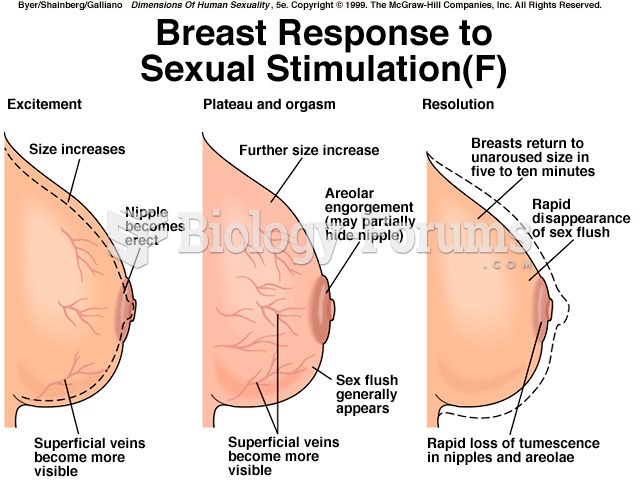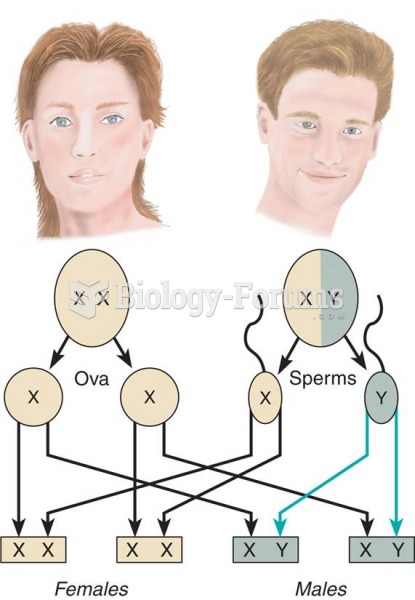Answer to Question 1
Many researchers and theoreticians have advanced hypotheses in an effort to explain what causes sexual orientation and transgender identity. Some believe that the biology of an individual determines heterosexuality, same-sex attraction, and gender identity. Some studies have shown chemical and brain structure differences for gay men and transgender persons. But it is impossible to determine causation from the results of these studies. A comprehensive study of sexual orientation was undertaken by Bell, Martin, Weinberg, and Hammersmith of the Alfred C. Kinsey Institute for Sex Research. They studied 979 gay men and lesbians and 477 heterosexual men and women, gathering a large amount of information about their lives in an effort to determine critical and statistically significant differences between the two groups. They found that (a) by the time that boys and girls reach adolescence, their sexual orientation is likely to be determined even though they were not yet sexually active; (b) the gay men and lesbians were not lacking experience in heterosexual experiences during their childhood and adolescent years, but they found the experiences ungratifying; and (c) among the men and women in the study there was a strong link between gender unconformity and the development of same-sex sexual orientation. Gender nonconformity refers to children who prefer engaging in activities generally associated in this culture with the other gender-for example, boys playing with dolls. These findings suggest that sexual orientation is established early in life, perhaps before adolescence; one's sexual orientation may even be set at birth. The reason(s) for this have not been established.
Studies have also suggested that the brains of heterosexual and gay men are different and that certain brain structures in gay men are more like those in women. Twin studies have suggested that in pairs of twins both twins would most likely be gay if they were identical twins (they share exactly the same genes) than fraternal twins. After reviewing the studies conducted on sexual orientation, Hyde and DeLamater concluded that the causes of sexual orientation are not yet known.
A number of theories of sexual orientation and the evidence supporting or refuting them have been examined. It is not known which theory is correct and what causes sexual orientation. The same may be said of gender identity, but a recent study by UCLA researchers has suggested that male-to-female transsexuals have different brain structures than those males who are biologically male and have a congruent gender identity. These differences occur mainly in the frontal and orbito-frontal cortex (involved in decision-making), central sulcus, perisylvian regions helps to process language), and paracentral gyrus; and within the right hemisphere included pre-/post-central gyrus (involved in sense of touch), parietal cortex (integrates sensory information), temporal cortex (involved with visual information), precuneus (concerned with reflections upon self and aspects of consciousness), fusiform, lingual, and orbito-frontal gyrus. This led the researchers to conclude that there was a biological difference between these participants and males who felt compatible with their gender.
Answer to Question 2
The three major dimensions of sexuality are:
Biological Dimension: The biological dimension refers to an individual's genital and chromosomal structure. Typical females have vaginas and accompanying female organs as well as XX chromosomes. Males have penises with accompanying male organs and XY chromosomes. However, there are also individuals who have ambiguous genitalia and/or genitalia with chromosomal structures that are different from the typical corresponding ones. For example, an individual may have a penis but may have female chromosomal structures. These, and a variety of other biological conditions, are termed intersex.
Gender Dimension: Gender relates to the feeling of being female or male. Typically, individuals with male biology feel male, and those with female biology feel female. However, there are individuals who have male biology and may feel female, and those with female biology who may feel male. The general term transgender may apply to them. Also, there are individuals who may feel both male and female (bigender), and individuals who may feel neither male nor female (agender).
Sexual Orientation Dimension: A third major dimension of sexuality is sexual orientation. This refers to romantic and sexual attraction. Most people are heterosexual, which refers to attraction to the opposite sex. However there are gay and lesbian individuals who are attracted to the same sex, and bisexuals who are attracted to both sexes. Transgender persons can feel attracted to people of the same, opposite, or both genders as well. And, there are individuals who do not feel a sexual attraction to either sex or gender, and may refer to themselves as asexual. Moreover, there are people who are not settled with feeling heterosexual or their biological gender and seek to find out about or more fully understand their sexuality; these clients may be said to be questioning. As well, some people may have difficulty in determining what sexuality is right for them and they may try on different forms to arrive at the one that is most congruent with their internal experience. For instance, a male might not feel comfortable as heterosexual and feel he may be bisexual. This does not feel right so he may define himself as gay. In turn, this may not feel right and he may conclude that he is transgender. The latter may be the label that most suits his (or her) experience of sexuality.







